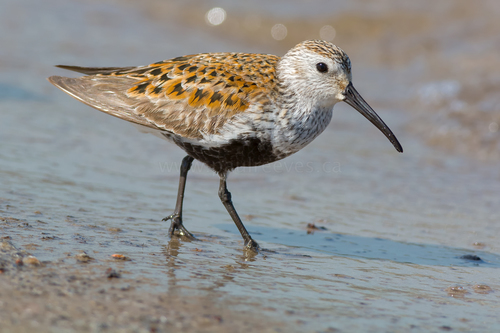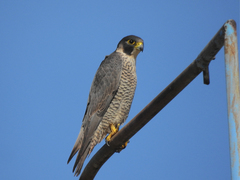Dunlin
Calidris alpina
Calidris alpina, also known as the Dunlin, is a small wader that is frequently observed in the coastal regions of the Comunidad Valenciana. This bird belongs to the Scolopacidae family and is often spotted in wetland areas, salt marshes, and along shorelines.
Characteristics:
- Size: The Dunlin measures approximately 17-21 cm in length with a wingspan ranging from 32-36 cm.
- Appearance: It has a distinctive black belly patch during the breeding season, which contrasts with its otherwise brown-grey plumage. In non-breeding months, the plumage becomes more muted, turning to grey and white tones.
- Beak: The species has a short, slightly downward-curved bill, which it uses effectively to probe mud and sand for food.
Habitat:
- Calidris alpina is often found in tidal areas, favoring the mudflats, estuaries, and sandy beaches of the Comunidad Valenciana.
- Their presence is particularly noticeable during the migratory periods in spring and autumn when they stop over to rest and feed.
Behavior and Diet:
- The Dunlin feeds primarily on insects, worms, small crustaceans, and mollusks. It forages by sight and touch, often seen probing the ground with its beak.
- They are social birds, usually seen in large flocks, especially during migration.
Conservation Status:
- Currently, the Dunlin is classified as a species of Least Concern on the IUCN Red List, but it is affected by habitat loss and changes in coastal ecosystems.
- Efforts to preserve their natural habitats in the Comunidad Valenciana are vital for maintaining healthy Dunlin populations during their migratory stopovers.







